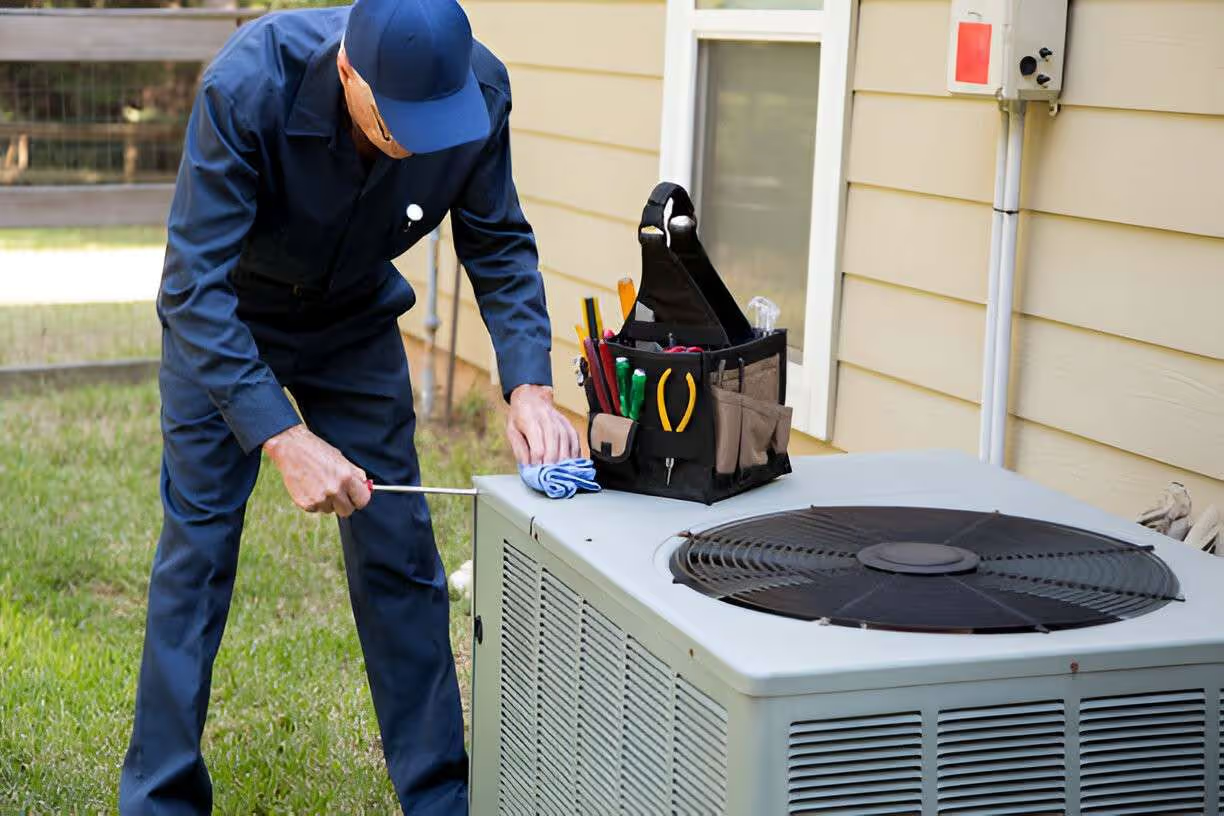AC Replacement in Spring Hill, FL


Why plan an AC replacement in Spring Hill, FL
Spring Hill’s subtropical climate means air conditioners run hard for much of the year. Older or undersized systems struggle with:
- Inconsistent cooling and hot spots
- Poor humidity control and elevated indoor moisture
- Rising energy bills as efficiency drops with age
- Increased risk of compressor failure during peak demand
- Corrosion of outdoor units from salty coastal air
A properly sized, modern system with correct installation mitigates these issues and can improve comfort and durability in local conditions.
Common AC replacement triggers and issues in Spring Hill
Homeowners typically replace systems when they experience:
- Repeated refrigerant leaks or compressor failures
- Age over 10–15 years with declining efficiency
- R410A or older refrigerants or equipment that is unreliable
- Frequent breakdowns or large repair expenses
- Uneven cooling due to undersized equipment or duct problems
Many Spring Hill homes also see accelerated wear from near-constant operation during humid months. Identifying the true cause before replacing equipment prevents mis-sizing or unnecessary expense.
Home energy assessment and load calculations (what to expect)
A dependable replacement starts with a comprehensive home energy assessment and an accurate load calculation. This includes:
- Inspecting insulation, window orientation, shading, and attic ventilation
- Measuring home square footage, ceiling heights, and construction details
- Examining ductwork condition, sizing and leakage
- Performing a Manual J load calculation to determine cooling and heating load requirements
The result is a recommended system capacity and configuration tailored to your home and Spring Hill climate. Oversizing is a common mistake; it increases short-cycling, humidity problems and energy waste. Proper sizing ensures even temperatures and better humidity control.
Comparing energy-efficient models and technologies
When evaluating replacement options, consider performance features that matter in Florida:
- Higher SEER ratings for lower seasonal energy use. Look at SEER2 and HSPF values for heat pump options.
- Variable-speed or inverter-driven compressors for improved comfort, quieter operation and better humidity control
- Heat pumps as a viable option for mild Florida winters; modern heat pumps can be more efficient year-round
- Two-stage compressors for balanced cooling and reduced short-cycling
- ENERGY STAR qualified models and systems designed for coastal environments with corrosion-resistant coatings
- Compatible thermostats (programmable and smart models) to optimize system performance and energy savings
Selecting a model should weigh initial cost, long-term efficiency, local humidity control, and expected lifespan.
Removal of old equipment and professional installation steps
A professional AC replacement follows a structured process to protect your home and system longevity:
- Pre-installation inspection and permit acquisition if required by local codes
- Safe recovery of refrigerant using certified equipment in compliance with EPA regulations
- Disconnecting and removing the old condenser, evaporator coil or air handler, and associated components
- Inspecting and repairing or replacing ductwork, insulation, and condensate drains as needed
- Installing the new outdoor unit on a proper pad or mounting, and fitting the matched indoor coil or air handler
- Properly charging refrigerant by weight and verifying line set insulation and brazing integrity
- Starting the system, balancing airflow, measuring superheat/subcooling, and verifying electrical and safety controls
- Final inspection, documentation of system settings, and discussion of warranty registration and maintenance needs
Thorough installation and quality control reduce callbacks and preserve warranty coverage. In coastal Spring Hill properties, extra attention to corrosive air exposure and proper sealing is important.
Available rebates, incentives and financing options
Homeowners replacing inefficient systems may qualify for various incentives:
- Utility company rebates or performance-based incentives for high-efficiency systems
- State or local programs that target energy-efficient HVAC upgrades
- Federal tax credits or energy incentive programs when equipment meets qualifying efficiency or heat pump criteria
- Manufacturer financing or third-party financing options that spread cost
Rebate and incentive availability can change over time. When planning a replacement, review current local utility programs and verify eligibility criteria and documentation requirements before installation.
Warranty, disposal and environmental responsibilities
Proper warranty handling and environmentally responsible disposal are essential:
- Understand manufacturer warranty terms: typical parts warranties range from 5 to 10 years; compressors sometimes have extended coverage with registration
- Register the system promptly to maintain full warranty benefits and retain documentation
- Ensure the installer provides written warranty and workmanship guarantees covering installation errors
- Old equipment must have refrigerant legally recovered by a certified technician and be recycled or disposed of in compliance with federal and state regulations
- Recycle scrap metal and electronic components where required to minimize environmental impact
Properly handled disposal and warranty registration protect your investment and prevent regulatory issues.
Long-term benefits and maintenance tips for Spring Hill homeowners
Replacing your AC with a correctly sized, efficient system improves comfort, lowers operating costs and increases reliability. To maximize the investment:
- Keep filters clean and replace them regularly to maintain airflow and indoor air quality
- Schedule seasonal tune-ups to check refrigerant, electrical connections, and coil cleanliness
- Inspect and seal ducts to avoid energy loss and moisture infiltration
- Use programmable or smart thermostats to minimize unnecessary runtime while preserving humidity control
- Consider protective measures for outdoor units in coastal locations, such as corrosion-resistant coatings or strategic siting
A thoughtfully selected and professionally installed system tailored to Spring Hill conditions will deliver consistent cooling, better humidity control and lower energy bills for years to come.
Service Areas


